| |
|
Wednesday, May 28 JFS~Ellen Saks lecture on mental illness
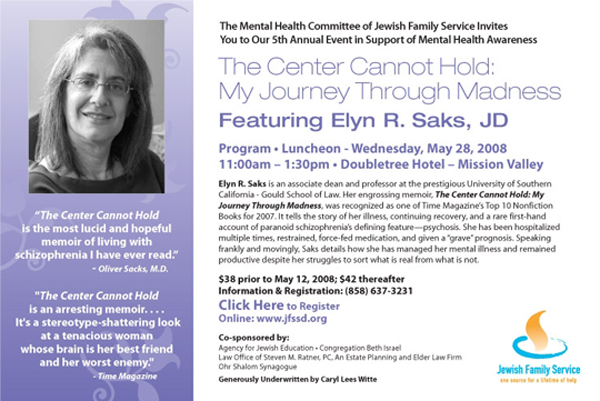

Tuesday, June 3 Guardians Golf & Tennis Tournament


Friday-Saturday, June 6-7 JFS~Judaism on the Wild Side

Sunday, June 8 Temple Solel~Tikkun Leil Shavuot


Nancy Harrison
cruise & tour specialist
(619) 265-0808

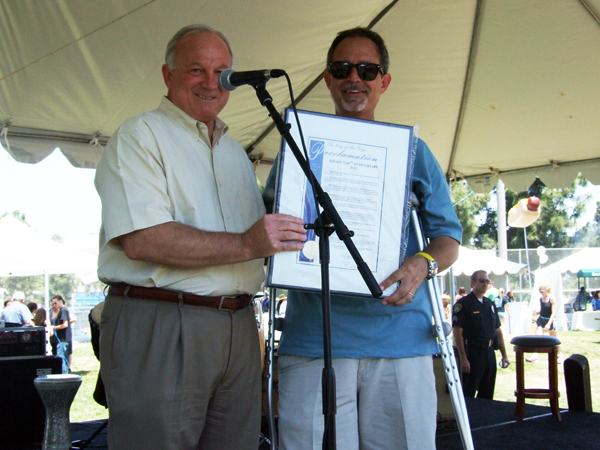
THE JEWISH CITIZEN
Diplomacy, art and food were mainstays of Israel festival at Lawrence Family JCC
By Donald H. Harrison
 SAN DIEGO—Thousands of San Diegans celebrated Israel’s 60th anniversary Sunday at a festival showcasing that country’s diplomacy, tourism and arts. There was room as well among scores of booths on the grounds of the Lawrence Family JCC for San Diego entrepreneurs to display their products and for a great variety of Jewish institutions to promote their programming. SAN DIEGO—Thousands of San Diegans celebrated Israel’s 60th anniversary Sunday at a festival showcasing that country’s diplomacy, tourism and arts. There was room as well among scores of booths on the grounds of the Lawrence Family JCC for San Diego entrepreneurs to display their products and for a great variety of Jewish institutions to promote their programming.
Israel’s Deputy Consul General Yaron Gamburg and San Diego Mayor Jerry Sanders underscored the linkages that bind the United States and Israel during short talks to several hundred people who crowded under a large tent to shield themselves from a sunny day during which temperatures reached the 90s.
“Today we celebrate a small country with a big heart,” said Gamburg. “Today we celebrate a democracy that stands strong and vital against all odds. Today we celebrate the nation of Israel, the cradle of Judaism, the essence and life spring of the Jewish people.”
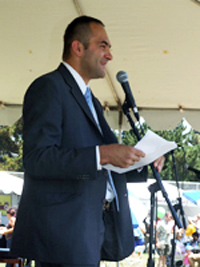 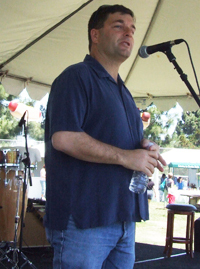 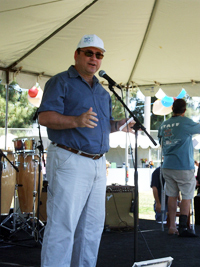
Sanders, a Gentile who is married to a Jew, recalled that when he was 12 or 13 years old his grandmother gave him a copy of the book, Exodus, by Leon Uris, and “I was amazed at the courage of the pioneers of the Jewish settlement of Israel…” He said that his wife, Rana Sampson, had lived in Israel, and that her sister has been a resident of an Israeli kibbutz for approximately 30 years. These experiences “confirmed our family really admiring what Israel has done and realizing how important it is to have a strong Israel,” he said.
The mayor brought with him a framed proclamation declaring May 18 to be a celebration of Israel’s Independence Day throughout San Diego. He presented it to Michael Rassler, chief executive officer of the United Jewish Federation, who limped up to the microphone on crutches to accept it. Rassler later explained that he had slipped on the stairs in his home, and injured ligament last Wednesday. Doctors expected a full recovery, he said.
Another speaker was Boaz Meir, a representative of the Jewish Agency for Israel, which he described as responsible for “keeping up our connection with the Jews outside of Israel, or helping with aliyah, or shaping the society—socio-economic—in Israel.” He noted that before David Ben Gurion declared Israel’s independence in 1948 and became that nation’s first prime minister, he had served as the executive of the Jewish Agency.
Tibi Zohar, co-chair with his wife Tami of the series of Israel-at-60 events that have been staged in San Diego County since Pesach, was moved by the occasion to write some poetry, which he read to the crowd. An excerpt:
Sixty years of such achievements
Fills me with tremendous pride
Having such a Jewish homeland
Is a joy I cannot hide.
I just feel that I belong there;
It makes no difference where I am;
Living here in San Diego,
Dreaming of Jerusalem…
Many attendees of the Israel Festival paid $5 to receive a hat, t-shirt, water and “passport” and set out on a mile walk in the neighborhood encompassing the JCC and La Jolla Country Day School. They paused at stations along the way where volunteers stamped the walkers’ passports and distributed information about different cities to visit in Israel.
 
Billed as “The Walk for Israel,” the activity replicated similar walks held around the world in solidarity with Israel. Cities of Northern Israel were highlighted in the portion of the walk off the Lawrence Family JCC, while cities of central and southern Israel could be “visited” at various festival booths on the grounds.
Facts about each venue were distributed at the booths. Concerning Mt. Hermon, which rises 9,230 feet above sea level on the Syrian-Israel-Lebanese borders, visitors learned that it has “seasonal snow which covers all three of its peaks… in winter and spring.”
Rosh HaNikra, near Israel’s Mediterranean border with Lebanon, “served as a passage point for trade caravans between Lebanon, Syria, Israel, Egypt and Africa,” according to the information sheet, and “today, cable car takes visitors down to see the grottos.”
"This is a fun way to hang out with friends and peopole in the community and to remember all the different cities in Israel," said Bernardo Ferdman, co-chairman of the Latino Jewish Dialogue, who made the walk with his son Yoel, 11.
"We get a little exerise while doing it together," Ferdman added. "It is nice to know that everyone is doing it all around the world, so I think ... it is a way to have collective consciousness as a large community of Klal Yisroel"
Rassler said proceeds from the Walk for Israel would be contributed to Sha’ar Hanegev, the Federation’s sister region in Israel, to help defray construction costs for a new school that will be built of materials able to withstand the near daily assault of Kassam rockets.
Festival programming included performances by the Beta Dance Troupe of Ethiopian Jews—who performed the evening before at Tifereth Israel Syangogue—as well as by Yoni Carr, a local Israeli dance teacher, and the Ken Dancers, based at the Spanish-language Ken Jewish Community. There also was a demonstration of krav maga, the Israeli martial art.
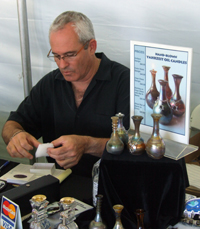  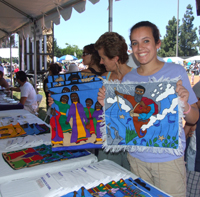
Food and craft vendors and Jewish organizations had the opportunity to meet thousands of people who visited the festival grounds between the 11 a.m. opening and the 4 p.m. closing.
The ShirTal Jewelry & Judaica booth, featuring 2,000-year-old Roman glass jewelry, also introduced a new product; a blown glass Yahrzeit oil cruses made in Lincoln, Nebraska, and packaged with enough oil to last for two full memorial days. “It is beautiful, a fresh idea,” enthused vendor Gadi Tene, a vendor originally from Ramat Gan.
Nearby, Saadia and Nava Mizrahi distributed literature for “Think Green Clean” products, a multi-level distributing company that offers non-toxic soaps and cleaning agents for people who want to be certain they are not adding to the pollution that runs through our drains into the oceans.
Lee Schwimmer and Karalee Conover meanwhile sold the distinctive and beautiful pillow and challah covers made by Ethiopian men in illustration of various stories from the Torah. They pointed out two scenes that occur within a short passage of each other: Moses parting the Red Sea and his sister Miriam dancing in joy after the Israelites made it safely to the other side.
Each of the covers “take a month to make and they are signed,” Schwimmer said. She folded back the cover of one to reveal the name of artist Atalo Gebri. Inside the cover, “there is background on the design. Some people like to buy them as gifts for bar/ bat mitzvah, especially if it relates to their Torah portions.”
The booth was sponsored by the North American Conference on Ethiopian Jewry, for which Schwimmer at 619 518-5822 is a contact in the San Diego area. She said while she does not know the exact number of Ethiopians waiting for the opportunity to make aliyah to Israel, “life over there is very challenging. They are hungry, and as you know the price of staples has gone up worldwide…. One hundred percent of the proceeds from these sales to feed Ethiopians still there.”
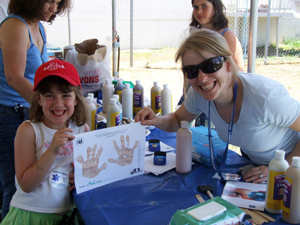 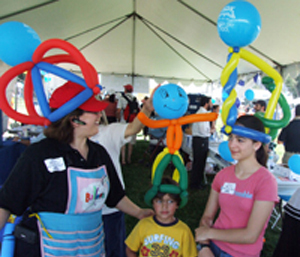
At another long tent, featuring various Jewish organizations, Marcie Demburg-Serra of the Anti-Defamation League was watching Adina Naftalin, 6, make a handprint.
She said this particular activity was part of the “Miller Early Childhood Initiative to have anti-bias training in the preschools throughout San Diego… We received a $100,000 grant, and we will be bringing this program to different preschools throughout San Diego and hopefully making an impact.
“Think of it as nipping biases in the bud,” she said. “Think of all the biases that reach your children, and what shapes their identity, what shapes their personality. We’re working with the adults who work with the children early…”
And how do handprints fit in?
They help to “teach kids that they are all the same yet they can be slightly different at the same time,” Demburg-Serra said.
At another tent, where local schools promoted their educational programs, my daughter Sandi Masori made balloon hats in behalf of Soille San Diego Hebrew Day School, where our grandchildren are in first grade and the nursery. The atmosphere was not at all competitive, with Kobe Germain, 5, son of admissions director Marci Germain of Chabad Hebrew Academy among those happily claiming a balloon hat.
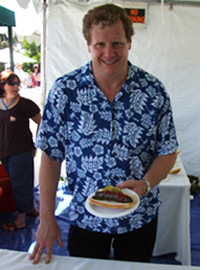 No Jewish event would be complete without food—and there was plenty of the kosher variety available. I have always wanted to sample the South African barbecue favorite known as boerewors and I got my chance at the booth run by Charles Rubin of Shmoozers. He explained the boerewors is “100 percent beef with coriander, sugar, salt, pepper, vinegar and sausage casing. In South Africa, there is no barbecue without a boerewors.” No Jewish event would be complete without food—and there was plenty of the kosher variety available. I have always wanted to sample the South African barbecue favorite known as boerewors and I got my chance at the booth run by Charles Rubin of Shmoozers. He explained the boerewors is “100 percent beef with coriander, sugar, salt, pepper, vinegar and sausage casing. In South Africa, there is no barbecue without a boerewors.”
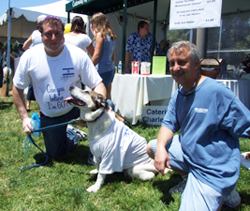 The festival was also a time for catching up. Rabbi Jeff Lipschultz was there with his dog, Jesse, a mixed cattle dog. Talking with Norm Katz, executive vice president of Tifereth Israel Synagogue (right) , Lipschultz shared that he and his wife Naomi are expecting a son in August and that they also will be leaving Temple Beth Sholom in Chula Vista so he can take a new pulpit with Beth Judah Temple, a Conservative congregation, in Wildwood, New Jersey. The festival was also a time for catching up. Rabbi Jeff Lipschultz was there with his dog, Jesse, a mixed cattle dog. Talking with Norm Katz, executive vice president of Tifereth Israel Synagogue (right) , Lipschultz shared that he and his wife Naomi are expecting a son in August and that they also will be leaving Temple Beth Sholom in Chula Vista so he can take a new pulpit with Beth Judah Temple, a Conservative congregation, in Wildwood, New Jersey.


Sabbatical shalom: No, it's not a misspelling
Editor's Note: Between May 22, 2007 and today, Dov Burt Levy has contributed 30 columns to San Diego Jewish World, columns that also appeared in his home newspaper, Jewish Journal-Boston North. Now, Levy is planning to take a year off to recharge his batteries, and we look forward to the return of his column after he is rested and refreshed. We wish him an enjoyable sabbatical!
By Dov Burt Levy
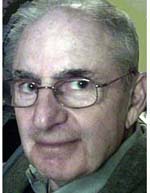 SALEM, Massachusetts—I missed only two issues over the past six years of writing a bi-weekly op-ed column. Now, as college professors do, I am taking a real sabbatical. SALEM, Massachusetts—I missed only two issues over the past six years of writing a bi-weekly op-ed column. Now, as college professors do, I am taking a real sabbatical.
Thirty or 35 columns a year is not really a big deal for professional journalists. many write two or three columns a week and put together books at the same time. Still, I need a break, not so much from the writing but having to pay such close attention to many newspapers, magazines and books everyday. I just need a time out from so much bad news every morning, or shall I say dwelling on that bad news.
I got into op-ed writing in Israel in 1988 on a lark, almost on a dare. I was instantly hooked when the first column I submitted to the Jerusalem Post took up a quarter of the back page. The headline read, "The Bureaucracy Needs Managing." My byline was Dov Levy, to which I added Burt for the next column because Dov Levy is about as common a name in Israel as John Smith is here.
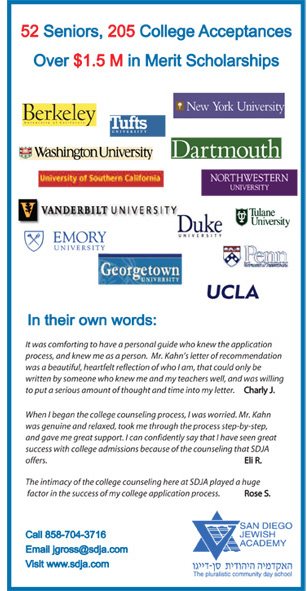 My biggest misjudgment in the past six years came in February 2003 when I revealed that this inveterate peacenik had become a supporter of the Iraq war. It was the most difficult column I ever wrote. Like many, I had come to accept what I was reading, that Saddam, a crazed dictator who had killed his own citizens by the tens of thousands, would not hesitate to use his weapons of mass destruction to do the same to other nations. My biggest misjudgment in the past six years came in February 2003 when I revealed that this inveterate peacenik had become a supporter of the Iraq war. It was the most difficult column I ever wrote. Like many, I had come to accept what I was reading, that Saddam, a crazed dictator who had killed his own citizens by the tens of thousands, would not hesitate to use his weapons of mass destruction to do the same to other nations.
Except, there were no WMDs. I had believed that a United States president would not lie to the American people about a subject so grave and important. I was wrong. With their continuous twisting of the truth, President Bush and his true believers have injected a large dose of cynicism and distrust into the American body politic.
A better predictive column ran in this space last July. In it, I urged readers not to expect much, if anything, from the forthcoming Annapolis summit with President Bush and Prime Ministers Abbas and Olmert. I said it was a PR event signifying little, by actors who were reading a tired old script, and that all three had extremely low ratings among their people.
I was right. Movement on Bush's dream of a Mideast peace legacy has moved at a snail's pace. Meanwhile Abbas can't or won't prevent Gaza-based rockets from being fired into Israel, while Olmert is about to resign amid a financial scandal. And Mr. Bush, with a long term, record breaking, low approval rating of under 30 percent, and with his successor's election underway, he is irrelevant as a political force in America.
 My lighter columns were a lot more fun than those on heavy topics. For example, in March 2003 I discussed the controversy in Kennebunk, Maine, whose town officials refused to allow a restaurant to use Hebrew National Hot Dog signs on their outdoor umbrellas, as a sort of latter day invocation of the time that local hotels did not allow Jews to vacation at such sea side resort areas. My lighter columns were a lot more fun than those on heavy topics. For example, in March 2003 I discussed the controversy in Kennebunk, Maine, whose town officials refused to allow a restaurant to use Hebrew National Hot Dog signs on their outdoor umbrellas, as a sort of latter day invocation of the time that local hotels did not allow Jews to vacation at such sea side resort areas.
Later that year I told you about the op-ed contributors in an issue of the International Herald Tribune read while sitting in a London café. Because all the authors were Jewish except for Korean Professor Han Sung-Joo, I got to write the dream headline: "Five Jews and a Joo." More important was the realization that five Jews across the political spectrum could fill the opinion pages of a major international newspaper.
During the past week, many people at my home base in Boston learned I would be taking this break. Many came up to me or wrote with the nicest, complimentary comments. Most of them seemed to think, no matter what I told them, that this short departure signaled something profound, like a newly minted disease.
I have two comments about that. First, no new or even old outbreaks of disease; just a simple time out. Second, what a great thing it was for me to have announced this sabbatical because the feedback made me feel like I had died and I was hearing eulogies that most people will never tell you when you are alive and can appreciate it.
Which leads me to offer some advice. If there are people you like, love, care about, like their work or anything else about them, do yourself and them a real big favor. Tell them. Now. Not in a prayer for the dead. Not to their survivors. Not in a letter to the newspaper editor for the community to read after their demise. Say it now; say it loud. Make them, and yourself, proud. (with apologies to James Brown)
So, dear reader, I am honored to have been on your reading list these past years.
I look forward to returning refreshed and renewed and singing the praises of what a sabbatical does for the heart, soul and mind.
< BACK TO TOP


|
REFLECTIONS
A life story contained in six boxes
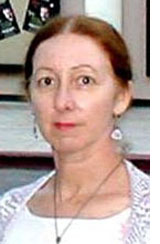 SAN DIEGO—For the past twelve years I’ve volunteered at the San Diego Public Library processing books (the Library is VERY picky about how books are processed). Several other tasks include giving a beloved old book a new cover and making it more inviting to read. It pleases me to think of the people who are reading the thousands of books I’ve processed. SAN DIEGO—For the past twelve years I’ve volunteered at the San Diego Public Library processing books (the Library is VERY picky about how books are processed). Several other tasks include giving a beloved old book a new cover and making it more inviting to read. It pleases me to think of the people who are reading the thousands of books I’ve processed.
The most interesting task is going through the boxes of books that the kind citizens of San Diego donate; an exceedingly important resource for the library. A donated book may be added to the collection either because the library doesn’t have a copy (a fairly rare occurrence) or needs more copies, or to replace a tattered copy already on the shelf. It might also be sent to other branches if their copies are missing or damaged.
After years of going through the boxes of donations one develops almost a sixth sense about the possible value of a book. Does the library need more copies because it is a popular author? Is it a literary classic, or a classic of its genre? It is a better copy or a higher quality edition than is presently in the collection? Did the author sign it? Once I found a signed autobiography by a world famous cartoonist and he added a sketch - which increased the value of the book. Everything of possible value to the library I put aside for the branch manager/librarian. Though she makes the final decision - I can’t take up her time unnecessarily so my choices have to be judiciously considered.
The donated book might also be a treasure. Several times I have had the good fortune to spot such a treasure which was then added to the rare book collection in the Wangenheim Room - where I was once a docent. One such book - which I rescued from the hand of a library clerk who was about to throw it in the trash (the clerk didn’t like “old” books) - turned out to be the most valuable ever found: a history of the Civil War which was valued at over $600.00. It was 120 years old. Other treasures might be sent to the San Diego Historical Society or the California Room at the library.
If the library has no use for a donated book, the Friends of the Library will sell it; the resulting funds are used to purchase new books or other necessities. There have been times, because of the perennial city budget crises (which the City Council invariably takes out of the Library’s budget), the monies from the Friends is the only resource for new books. The Library is quite dependent upon its volunteers, too - there are over a thousand of us with many having volunteered for decades.
Donated books have been also been passed along to charities, the military and to prisons. Thus, many positive things happen when a book is donated. (Consider this the next time you are dusting the shelves of books in your house.)
I have found all kinds of things in the boxes of donated books. Some of it is funny: underwear (clean), table wear (stainless steel), balloons (deflated). Some of it is amazing: uncashed paychecks (still good), cash, air line tickets (plane took off and landed quite some time ago). Some of it poignant: love letters, marriage proposals, birthday cards from parents/children, baby pictures, letters begging for forgiveness. I make it a point not to read the letters - but often the writing jumps out at me - large print - underlined - highlighted. And, I do have to look inside envelopes to make sure there isn’t anything of real value such as cash which if possible is returned.
I find books borrowed from libraries all across the country; some of them quite old. The SDPL makes an effort to return them to the original owning library.
Sometimes what I find is sad: a Bible given to a Bar/Bat Mitzvah celebrant inscribed lovingly by the Rabbi or a grandparent and now being given away, a Communion Bible from a priest, a sympathy card on the death of a child. Letters breaking off an engagement; I’ve seen it all.
People often donate what they no longer need, but can’t bear to throw out. Recently I had a box of a dozen large scrap books all beautifully pasted up. It was the yearly history of a ladies craft group; their pictures with bright smiles - slowly ageing with the years. Prizes they had won at craft shows, luncheons, craft sessions in their homes, an evening with their husbands in attendance. It was all so carefully - lovingly done - but apparently the group existed no longer and the last member couldn’t bear to throw it all out, so I had to. I had no choice, the library couldn’t use it.
It is not unusual for me to find donations from the same source and I quickly realize I’m looking through the life cycle of another human being - all contained in a few boxes. After I go through them I know a great deal about the person: name, approximate age, gender, religious affiliation, political bent, vacations/trips taken, career choices, goals achieved, marital status, children, illnesses and other challenges.
It goes something like this. The first box is filled with undergraduate textbooks; English (grammar/composition), psychology, some math, humanities. I know her name - it’s written inside the cover of the textbooks, along with the year. Next are books on dating - how to meet the “right” guy. Now there are more defined books such as teaching in the early grades, education lesson plans - she’s decided to become a teacher. When I see a book about blending career and marriage, it’s safe to guess she met the “right” guy. This is confirmed by a cookbook: cooking for two.
Books on teaching children with learning disabilities tells me she’s going for an advanced degree and texts on the hearing disabled and sign language, indicates she’s specializing. Aha! A book on baby names and parenting - her own child is on the way! “How to Raise a Teen” and “Returning to a Career” - the child is growing up and mom wants to go back to teaching. Uh oh - a book on how to lose weight and deal with diabetes. Another book on being single again.
Now come the history, fiction and/or “how to” books on gardening, cake decorating, crafts, writing - she has time to read and wants to learn new things. And, books on travel and planning for retirement.
Increasingly she bought books on the challenges of ill health, loneliness, exercise for the older adult, trying to keep contact with the world while dealing with various disabilities. Writing a will, planning for long term care; she’s facing the realities of age and ill health. Almost invariably, in the last box - are books on issues of spirituality; coming to terms with finite existence.
I can picture what happened next. She died and that child (or children) cleaned up the house but couldn’t bear to throw out mom’s books - even the old outdated textbooks, and so donated them to the library. And now, I have to throw them out. The first few years it was difficult for me to do this - literally throw out the remains of another human being’s life. However, over time I’ve changed my view. I now see it as a kindness to the family. I’m saving them from having to stand at the trash can and toss out things their mother treasured. I can perform that necessary chore and save them the pain.
I don’t think I’ve ever seen so complete a record of a man’s life as I do of the women. Textbooks, yes, but not the other books about parenting, marriage, illness, or even spirituality; the actual progression through the passages of life. Boxes of books from a man are usually about his work and/or interests: sports, travel, carpentry, etc. When a woman wonders about life she is likely to go out and buy a book. When a man wonders about life - well, I’m not sure what he does (since I’m not male). Maybe he just reads the books his wife bought.
It often amazes me that otherwise knowledgeable citizens think the library - both Central and branches - are just museums for books. A visit to the Central Library downtown or the branches that are open on Sunday afternoon will reveal many young families, hundreds of patrons reading, researching, attending concerts and lectures. The library system is also open two nights a week. The branch at which I volunteer is always filled with children, parents reading to children, people doing research, reading in the patio; accessing the world through books and the internet. There are reading programs for adults and children, lectures, book clubs, tutoring, crafts, concerts, and classes.
The Library’s catalogue can be accessed online through a website giving one the ability to reserve a book, order it sent to a local branch, renew it, and key into all kinds of information and activities. A public library system opens out the world to every citizen no matter the income level or personal history. What a wonderful resource!
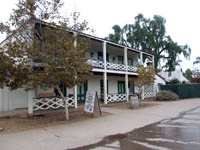
Robinson-Rose House
|
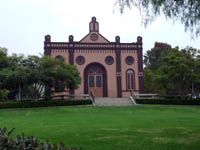
Old Temple Beth Israel |
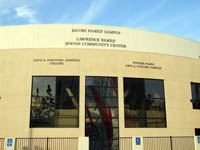
Lawrence Family JCC |
Editor's Note: We are reprinting news articles that appeared in back issues of various San Diego Jewish newspapers. You may access an index of the headlines of those articles by clicking here. You may also use the Google search program on our home page or on the headline index page to search for keywords or names.
Community Currents
From Southwestern Jewish Press, July 7, 1950, page 2
By Albert Hutler, Executive Director, United Jewish Fund
$1,000 A Month Spent To Give New Lives—An average of $1,000 per month is now being spent on the Emigre Program in San Diego, according to a report of the Emigre Committee. Spent for maintenance, medical needs, education, tools, etc., the money is being used to give new life in our community to people who have suffered much.
Cooperation and Coordination is Developing in San Diego—San Diego's Jewish Community, called immature by many, is beginning to mature as seen by many examples of community cooperation. The joint emigre project uses money furnished by the United Jewish Fund, skilled professional case work by the Jewish Welfare Society, and top volunteers do an Americanization job through the San Diego Section of the National Council of Jewish Women. Another indication is the professional case work rendered at the San Diego Home for the Aged, through arrangement with the Jewish Welfare Society. The interest in a Central Talmud Torah; the Jewish Education Commission; the deficit financing by the Fund of the local welfare agencies united through the Federation are all advances in community organization which are to be guarded carefully.
Loan Fund Operated by United Jewish Fund—How many know that the United Jewish Fund has a loan fund, which has in the last year loaned over $1,500 to residents of San Diego?
"Hate Monger" Fools Political Rally—Recently one of Southern California's most notorious "hate mongers" appeared as the speaker before a women's political group. He hides under the title of director "California Anti-Communist League," which is another Gerald K. Smith Front. When informed of the speaker's background, political leaders of the party in question left no stone unturned to try to rectify the situation.
"Day Camp" In Outstanding Program—If you see youngsters in town wearing tee shirts with "Camp Jaycee" you'll know they're from the Jewish Community Center Day Camp. In its fourth year it has become the outstanding camp of its type in San Diego. The City Recreation Department is now running a similar program. There's really no reason why the city can't run a complete program of this type as is done in New York, Washington, Detroit and other cities.
Jewish Welfare Society Expands—You wouldn't recognize the Jewish Welfare Society which has been reorganized under Morry Douglas's direction as president. Because of planning and supplementation of budget by the Federation, JWS now has a professionally trained staff consisting of a full time Executive Secretary and a part time case worker, as well as a full time stenographer. The agency handles family problems, transients, emigres, and works at the Home for the Aged. Mrs. Rose Anderson is Executive Secretary, Mrs. Robert Miller is the case worker, and Mrs. Millie Berman is the stenographer.
What Will You Do About These?—Four challenges face the San Diego Jewish Community: 1. Developing special programs to bring young people more actively into communal service and leadership. 2. Developing good activities programs for young people and for the aged. 3. Developing a sound Jewish cultural and educational program. 4. Developing a feeling of community solidarity.
{Return to top}


SAN DIEGO JEWISH WORLD THE WEEK IN REVIEW
Donald H. Harrison in San Diego: Night on Churchill—er, Dizengoff—filled
with new sights and shoulder movements
Natasha Josefowitz in La Jolla, California: What to do with those old family photos
Rabbi Baruch Lederman in San Diego: The Rosh Yeshiva and a Hebrew Christian; story by Yair Hoffman
Rabbi Leonard Rosenthal in San Diego: Starting Jewish studies even as an adult
Ira Sharkansky in Jerusalem: Retaliation in Gaza may be a matter of political timing after Bush, Pelosi visits
Adventures in San Diego Jewish History: What was the Jewish community news in 1950? Who were the newsmakers? Our archives answer these questions in daily installments
Ulla Hadar in Kibbutz Ruhama, Israel: The daily hell on Israel's side of Gaza line
Donald H. Harrison in San Diego: Walk through 4 centuries of S.D. history
Sheila Orysiek in San Diego: Chapter Eight in the serialization of her novel, Reluctant Martyr
Adventures in San Diego Jewish History: What was the Jewish community news in 1950? Who were the newsmakers? Our archives answer these questions in daily installments
Donald H. Harrison in San Diego: SDJA 10th grader breaks CIF seasonal strike out record, besting even David Wells' mark
Rabbi Dow Marmur in Toronto: Gay clergy issue prompts some Canadian congregations to leave United Synagogue
Hal Wingard in San Diego: His songs, "Sara," "Makhtesh Ramon," and "At the Jerusalem Wall"
Adventures in San Diego Jewish History: What was the Jewish community news in 1950? Who were the newsmakers? Our archives answer these questions in daily installments
Donald H. Harrison in Chula Vista, California: XLNC-1, TICO helping tore-popularize and internationalize classical music
Ira Sharkansky in Jerusalem: Intolerable situation on the Gaza border
Adventures in San Diego Jewish History: What was the Jewish community news in 1950? Who were the newsmakers? Our archives answer these questions in daily installments
Judy Lash Balint in Jerusalem: Pollard, Jewish identity and the drosh — subjects on a Jerusalem evening stroll
Donald H. Harrison is San Diego: Leftover matzah is no cocktail cracker
Sheila Orysiek in San Diego: City Ballet tilts and wins with Don Quixote
Fred Reiss in Winchester, California: Book examines biblical interpretations
Adventures in San Diego Jewish History: What was the Jewish community news in 1950? Who were the newsmakers? Our archives answer these questions in daily installments
Link to previous editions
< BACK TO TOP
|
|
